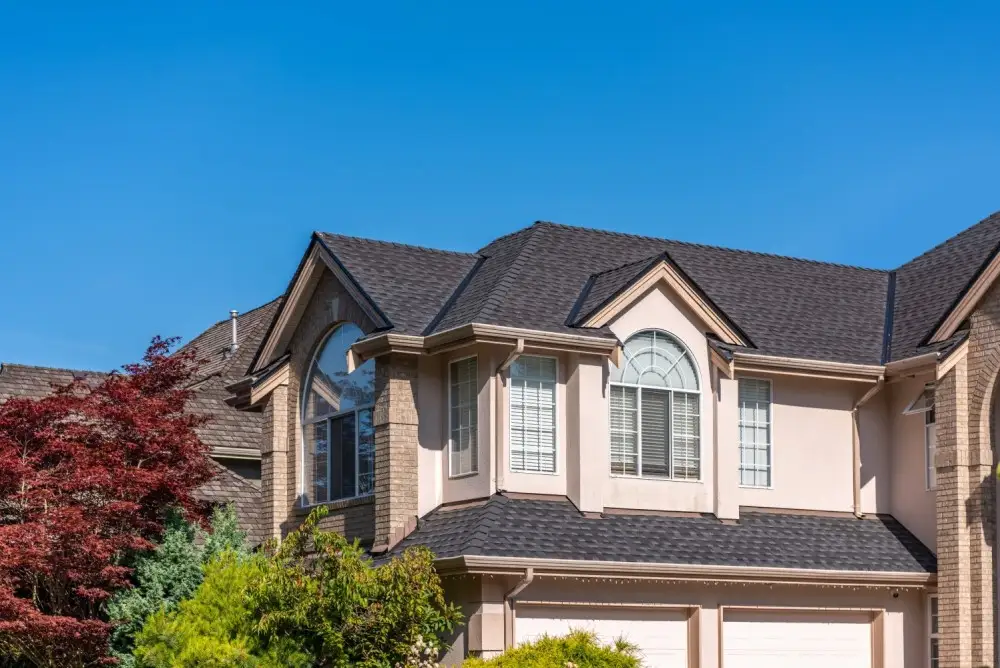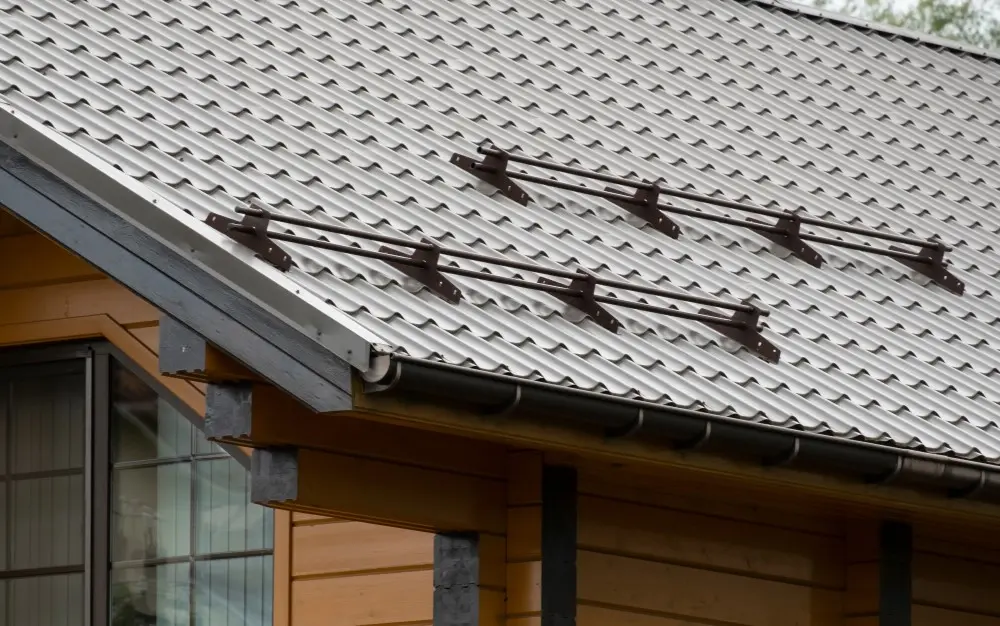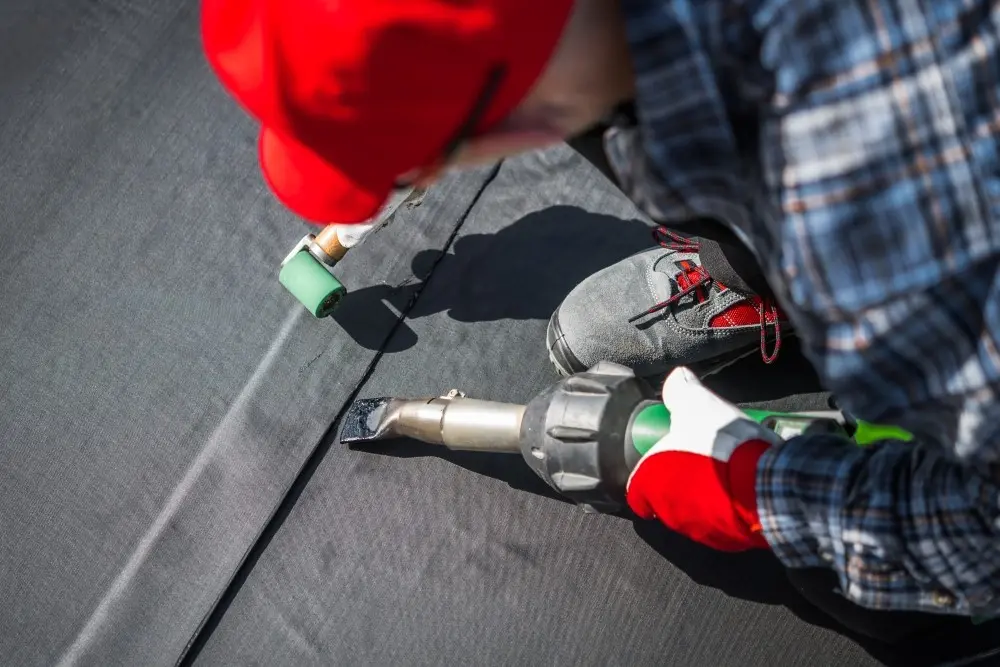What Is a Bundle of Shingles?
Manufacturers package roofing shingles in bundles for practical transportation and inventory management. These standardized units help roofing contractors and homeowners estimate material needs consistently across different brands. When you understand bundle basics, you can plan your roofing project more accurately.
Here's what defines a standard shingle bundle:
- Standard coverage: A single bundle covers approximately 33 square feet of roof area, making three bundles equal one roofing square.
- Weight management: Bundles typically weigh between 50 and 80 pounds, keeping them manageable for workers to carry safely.
- Variable shingle count: The number of individual roof shingles per bundle varies by type and manufacturer to maintain portable weight ranges.
- Product specifications: Labels show exact coverage, shingle count, and shingle weight for that specific roofing material.
How Many Shingles Come in a Bundle?
The shingle count per bundle isn't universal across all roofing materials, which can make it tricky when placing an order. Each type of roofing shingles comes with its own specifications based on weight, thickness, and manufacturing standards. Understanding these differences helps you order the right amount of shingle bundles for your roofing project.
3-Tab Shingles
Three-tab shingles remain the most common roofing material for budget-conscious homeowners. How many shingles are in a bundle of three-tab? You'll find 26 to 29 shingles per bundle, depending on the manufacturer. These lightweight asphalt shingles weigh 45-60 pounds per bundle and provide cost-effective coverage. Three bundles cover one roofing square, making calculations straightforward for most roofs.
Architectural Shingles
Architectural shingles usually have 20–22 shingles per bundle and weigh 60–80 pounds. They cover about 33 square feet and create a dimensional appearance similar to premium roofs. Three bundles cover one square, making them more visually appealing than 3-tab shingles.
Luxury and Specialty Shingles
Luxury shingles include 10–16 pieces per bundle due to their heavier build. These specialty shingles often need four or five bundles per square instead of three. You should always verify coverage and weight, as they vary by manufacturer and style.

Wood Shingles
Cedar and wood shingles have 200–400 pieces per bundle, depending on size and thickness. One bundle covers 25–35 square feet, making calculations trickier than with standard asphalt shingles.
Metal Shingles
Metal roofing is sold by the panel, not by bundles. Coverage is measured in linear feet or sheets. Some metal shingles mimic traditional designs but still use panel-based calculations. Rubber shingles and similar materials also follow unique systems.
#cta_here
Understanding Roofing Squares
In roofing, a square is the standard unit used to measure roof area — equal to 100 square feet, or a 10x10-foot section. This system simplifies estimates, pricing, and ordering by creating consistency across roofing contractors and manufacturers. When a contractor quotes a price “per square”, it refers to the cost of installing 100 square feet of material.
For asphalt shingles and architectural shingles, three bundles equal one roofing square, a ratio most manufacturers follow. Using squares makes communication and calculations easier for estimating roofing project needs, especially since most residential roofs range from 15 to 40 squares, depending on the roof’s size and complexity.
How to Calculate How Many Bundles Your Roof Needs
Accurate material estimates prevent waste and save money on your roofing project. Follow these steps to calculate how many shingle bundles you'll need based on your roof's square footage and specific characteristics.

Step 1: Measure Your Roof's Square Footage
Measure each roof plane separately. For simple gable roofs, multiply length by width for both sides and add them. For complex roofs, measure dormers, valleys, and extra planes, then total all areas to get the complete roof square footage.
Step 2: Account for Roof Pitch
Steeper roofs have more roof area than their footprint indicates. The roof pitch changes how much area your roofing shingles must cover, so use a roof pitch multiplier for accurate measurements.
Step 3: Convert to Roofing Squares
Take your adjusted square footage and divide this number by 100. This calculation converts your measurement into roofing squares. For example, a 2,240 square foot roof area equals 22.4 roofing squares. Round up to the nearest whole number for ordering purposes. In this example, you'll work with 23 squares.
Step 4: Calculate Bundle Requirements
Multiply your square count by three for asphalt or architectural shingles. For 23 squares, you’ll need 69 bundles before factoring in waste. Luxury and specialty shingles may require more.
Step 5: Add the Waste Factor
Every roofing project creates waste from cuts and starter strips. Add 10–15% extra bundles for simple roofs and 15–20% for complex ones with dormers or valleys. In our example, 69 bundles plus 15% equals about 79 total. This waste factor prevents material shortages and leaves you with a few extra bundles for future repairs.
Factors That Affect Bundle Requirements

Several variables beyond basic calculations influence how many bundles you'll actually need for your roofing project. When you understand these factors, you can order the right amount of roofing shingles the first time.
- Roof complexity: Simple gable roofs use materials efficiently, while hips, valleys, and dormers create more waste. Complex roofs may need up to 20% more shingles.
- Shingle type variations: Not all shingles follow the three-bundle rule. Architectural and specialty shingles may need four or five bundles per roofing square.
- Hip and ridge shingles: These cap roof peaks and hips. Measure the total linear feet and divide by the bundle’s coverage (20–30 ft) to find how many you need.
- Old shingle removal: Tearing off old shingles adds disposal weight. A 20-yard dumpster fits about 15–20 squares of asphalt shingles before hitting limits.
- Roof deck condition: Damaged roof decks often need plywood replacement before installing new shingles. Keep a few extra bundles for repairs.
Proper planning accounts for roof complexity, shingle type requirements, and potential roof deck repairs. As a result, your roofing project will stay on schedule and within budget.
How Much Does a Bundle of Shingles Weigh?
Knowing the shingle weight is essential for factors like planning transportation, delivery, and roof deck load capacity. The weight of roofing shingles varies by material and quality, influencing how many shingle bundles you can safely store during a roof replacement.
Standard asphalt shingles have predictable ranges: 3-tab shingles weigh about 45–60 lbs per bundle, architectural shingles 60–80 lbs, and luxury shingles can exceed 80 lbs. For a 2,000-square-foot roof (around 60–70 bundles), that’s roughly 4,200–4,900 lbs total — a key factor in delivery logistics and deck support.
Key weight considerations:
- 3-tab shingles: 45–60 lbs per bundle, light and easy to handle.
- Architectural shingles: 60–80 lbs per bundle, thicker laminated shingles with greater durability.
- Luxury shingles: 80+ lbs per bundle, premium materials with a dimensional appearance.
- Wood shingles: 200–700 lbs per bundle, varies by species and thickness.
- Metal shingles: Variable, generally lighter than clay or wood.
Choosing the Right Shingles for Your Project
The right roofing shingles will balance cost, durability, and visual appeal. Different roofing materials serve different needs and budgets for your roofing project.
When you’re selecting roofing shingles, balance cost, durability, and resale value. The 2025 JLC Cost vs. Value Report shows metal roofing replacement recoups about 50%, while asphalt shingles recoup around 68%, offering better overall ROI for most homeowners.
Choose metal shingles for longevity and modern appeal, or architectural asphalt shingles for a cost-effective mix of durability, dimensional appearance, and strong value in typical roofing projects.
Tips for Ordering the Right Amount
Getting your shingle bundles order correct the first time saves money and prevents roofing project delays. Here's how to ensure you order exactly what you need for your roof area.
- Add extra coverage: Include 10–15% more shingles for standard roofs and 15–20% for complex designs to cover cuts and waste.
- Check product labels: Confirm bundle coverage, shingle count, and weight to match your calculations and avoid load issues.
- Match dye lots: Order all asphalt shingles from the same batch for consistent color across your new roof.
- Watch for roofing scams: Some roofing contractors underestimate materials intentionally to lower their bid.
- Buy from reputable suppliers: Trusted roofing contractors and suppliers ensure accurate orders, fair pricing, and easier returns.
You should always purchase your roofing materials from reputable suppliers who stand behind their products. Established local suppliers often provide better service than big-box stores, helping you verify calculations and ensuring you get the right amount of shingle bundles for your specific roofing project.
Installing Shingles: DIY or Hire a Professional?
Deciding whether to install roofing shingles yourself or hire roofing contractors depends on several factors that impact your roofing project timeline, cost, and results. We’ve outlined the trade-offs to help you make an informed decision.
Professional installation ensures expertise and efficiency. Licensed roofing contractors finish most jobs in 1–3 days, handle permits, and follow local regulations. Their insurance protects you from liability, and skilled work prevents leaks or early wear. Before you move forward with a company, review questions to ask a roofing contractor to ensure their work will be high-quality and compliant.










